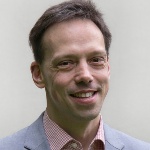The beginnings of helicopter simulation date back to 1985.
The beginnings of helicopter simulation date back to 1985, when the current head of the institute, Prof. Dr.-Ing. Ewald Krämer, began his doctorate on "Theoretical Investigations on the Stationary Rotor Blade Flow with the Aid of an Euler Method" with the previous head of the institute, Prof. Dr.-Ing. Siegfried Wagner - at that time still at the University of the Federal Armed Forces in Munich. Prof. Wagner took over the IAG in 1991 and brought along some of his current doctoral students from Munich, among others Roland Stangl, whose dissertation was titled "An Euler Method for Flow Calculation on Helicopters".
The following work began with the inclusion of flow-structure coupling, which is essential because of the close relationship between fluid mechanical forces and mechanical deformation, which in turn alters aerodynamics. [Hierholz, Buchtala]. Lorenz Zerle hoped for faster results through an analytical treatment of the wake geometry ("Aerodynamic and Aeroacoustic Rotor Calculation Using Freely Developed Wake Vortex Layers and Retarded Potentials"), but above all for a detailed representation of the blade-vortex interactions, which are of decisive importance for acoustics, especially during landing.
Subsequently, IAG's own helicopter-specific flow solver INROT was extended by an algebraic (Hubert Pomin) and an equilibration turbulence model (Björn Landmann), before the development was discontinued here and completely converted to DLR's structured flow solver FLOWer, which from then on was equal to INROT in terms of computing technology and efficiency. At the same time, the structural-mechanical beam model DYNROT by Andree Altmikus was extended to non-linear deformations before the flight-mechanics tool HOST by Eurocopter was also used here. Altmikus also changed the collective and cyclical control angles on the rotor for the first time in order to achieve given forces and moments, so that wind tunnel measurements could really be compared. At the same time, Andreas Fischer built up a conventional helicopter model and equipped it with very ambitious measurement technology, so that validation measurements for the simulation could also be carried out to a limited extent himself. With the departure of Fischer (and his very competent electronic HiWi) these experimental activities unfortunately had to be stopped.
The noise development of helicopters - an urgent problem
Since noise development is a pressing problem in helicopters, Manuel Keßler's toolbox was extended by a possibility for acoustic evaluation of CFD simulations with the active cooperation of Christian Lübon. With the help of the acoustic analogy according to Ffowcs Williams and Hawkings, the propagation of the resulting sound up to the observer in the far field can be reproduced well if the quality of the calculation is adequate.
With the implementation of deformable gratings and the Chimera technology, Wurst set further cornerstones
The discarding of INROT in favour of FLOWer left a gap in the core of the simulation, the CFD solver. With the aim of continuing to use cutting-edge technology on the helicopter simulation side in the future, Keßler and Landmann therefore began work on a discontinous Galerkin process and subsequently continued it with Lübon, with which the established second-order finite volume method is to be replaced in the long term. With the implementation of deformable gratings and the Chimera technology, Wurst has set further cornerstones for this, which are now being filled in by Genuit.
The increasing industrial interest in counter-rotating propfans prompted us to use the simulation technology proven in helicopters in this field as well.
Although there are significant efficiency gains compared to conventional turbofans, noise development could also be a real knockout criterion for these open rotors or CRORs, so that noise simulation and, above all, noise reduction are also a focus of the work here.
On the helicopter side, research is currently underway on tail shake, total helicopter trim in free flight and rotor blade optimization. In addition, the use of servo flaps at the trailing edges of the blades to increase performance in forward flight is again being investigated. In addition, the measuring helicopter has been reactivated and is currently being equipped with new measurement technology in order to be able to provide new validation data in a supportive manner, especially during flight in the ground effect. In a large EU project, a compound helicopter, which will have its maiden flight in 2019, is also being subjected to detailed aerodynamic, acoustic and flight-mechanical tests in cooperation with Airbus Helicopters.
Future work will probably resume the strong coupling between aerodynamics and structure in order to be able to tackle real 6 DOF maneuver simulations afterwards.
The measurement flights with the model helicopter are also used for this purpose, for example during the landing approach. In addition, DG activities are being pushed forward rapidly, and in the field of CROR, measurements - if necessary in IAG's own Medium-Sized Wind Tunnel - would be very valuable in the medium term for validating the simulations.
apl. Prof. Dr. Manuel Keßler

Manuel Keßler
apl. Prof. Dr.Deputy Head of Institute / Head of working group Helicopters and Aeroacoustics



